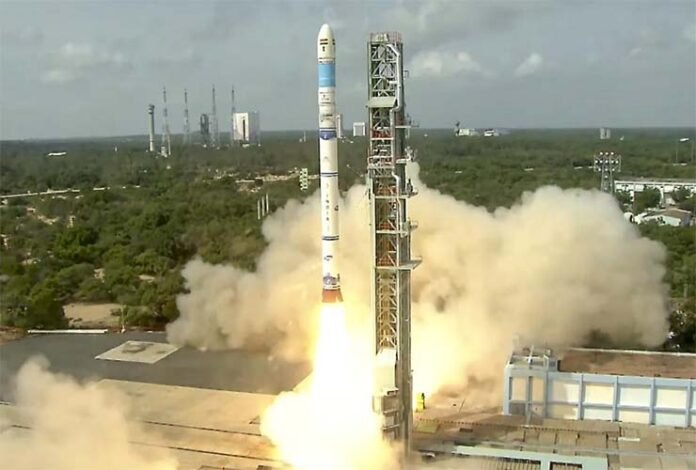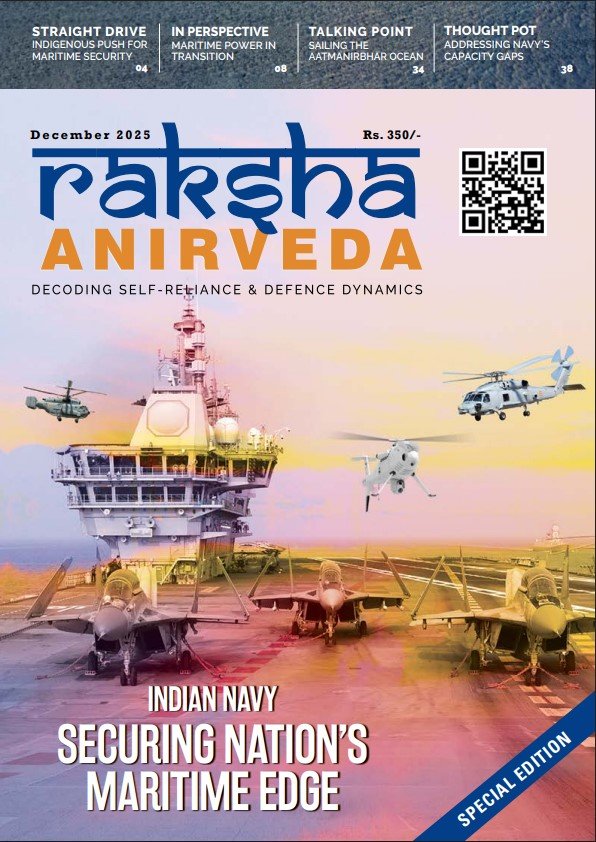New Delhi. The successful launch of the EOS-08 Earth Observation Satellite and the SR-0 Demosat onboard the Small Satellite Launch Vehicle (SSLV)-D3 on August 16 from the Satish Dhawan Space Centre in Sriharikota was a significant leap forward. In its third and final development flight, the SSLV-D3 lifted off from the first launch pad of the Satish Dhawan Space Centre at 9.17 am. As intended, seventeen minutes later the EOS-08 satellite and the SR-0 Demosat was injected into 475 km circular orbit. This mission not only demonstrated the SSLV’s capability to launch small satellites but also showcased its potential for commercial applications.
Heralding a new era in India’s space endeavours, this milestone marks the completion of the SSLV’s developmental phase. Prime Minister Narendra Modi extended his congratulations to ISRO and the wider space industry, highlighting the importance of this achievement.
Made by a Chennai-based start-up Space Rickshaw, SR-0 Demosat is a half-kg satellite. According to ISRO, nearly 21 new technologies are being tested. A very unique instrument on board the EOS8 satellite will measure how much exposure happens to surfaces through ultra-violet (UV light), and this will be a forerunner instrument for a similar package to be used on Gaganyaan to measure how much cancer-causing UV light exposure the “Gaganyatris” face on their space mission.
After the successful launch, ISRO Chairman S Somanath said, “The third developmental flight of SSLV, the SSLV-D3 with the EOS-08 satellite, has been successfully accomplished. The rocket has placed the spacecraft in a very precise orbit as planned. I find that there are no deviations in the injection conditions. The current indication is that everything is perfect.” He said that with success of the SSLV-D3, ISRO has declared the development process of SSLV completed.
“We are on the process of transfer of the technology of the SSLV to the industry and for serial production and launch of SSLV, this is a great beginning,” Somanath said. With the completion of the SSLV development project, the technology will be transferred to the private sector, enabling NewSpace India Limited (NSIL) and other industry players to produce and operate the SSLV for commercial missions.
Aligned with India’s vision to foster greater collaboration between the public and private sectors in the space industry, this move potentially paves the way for a SpaceX-like company in India.
According to Dr M Sankaran, Director of the UR Rao Satellite Centre (URSC), it is a trailblazing satellite packed with new futuristic technologies. The small 175 kg, EOS-8 satellite is packed with new and novel experimental technologies that will help power ISRO’s and India’s dreams. “There is no risk in flying a high-end satellite on a developmental flight of the SSLV. We are very confident of the rocket’s performance,” he asserted.
Designed to be a cost-effective and flexible solution for launching mini, micro, and nanosatellites, with a payload capacity of up to 500 kg, the SSLV with its low turnaround time of 72 hours and minimal launch infrastructure requirements positions itself an attractive option for both domestic and international clients. The SSLV’s successful development is expected to boost India’s presence in the global small satellite launch market.
Built on a standard ISRO’s Microsat/IMS-1 bus with a suite of advanced payloads for observation in the IR range, novel GNSS-R Payload and SiC UV dosimeter, EOS-08 is a first-of-its-kind mission. The satellite carries a host of new technology developments in satellite mainframe systems like an Integrated Avionics system – Communication, Baseband, Storage and Positioning (CBSP) Package, Structural panel embedded with PCB, embedded battery, Micro-DGA (Dual Gimbal Antenna), M-PAA (Phased array antenna) and Flexible solar panel and Nano star sensor etc. for onboard technology demonstration.
The satellite carries three payloads, namely Electro Optical Infrared Payload (EOIR), SAC, Global Navigation Satellite System- Reflectometry payload (GNSS-R), SAC and SiC UV Dosimeter, LEOS. The EOIR payload is to image in the Mid-Wave IR (MIR) band and long-wave IR (LWIR) band during day and night for various applications like Satellite-based surveillance, Disaster Monitoring, Environmental Monitoring, Fire Detection, Volcanic activities and Industrial and power plant disaster. The GNSS-R payload is to demonstrate the capability of using GNSS-R-based remote sensing to derive applications like Ocean Surface Winds, Soil moisture, Cryosphere applications over the Himalayan Region, Flood detection, In-land water body detection, etc. while, SiC UV Dosimeter is to monitor the UV irradiance at the View Port of the Crew Module in Gaganyaan Mission and to be used as a high-dose alarm sensor for UV Radiation.
The spacecraft mission configuration is set to operate in a Circular Low Earth Orbit (LEO) at an altitude of 475 km with an inclination of 37.4° and has a mission life of 1 year. Also onboard was the SR-0 DEMOSAT developed by Space Kidz India which was also placed in the intended orbit.
Capable of launching Mini, Micro or Nanosatellites (10 to 500kg mass) into a 500 km planar orbit, the SSLV is a three-stage launch vehicle with all solid propulsion stages and a liquid propulsion-based Velocity Trimming Module (VTM) as a terminal stage. According to ISRO, the design drivers of SSLV are low cost, low turn-around time, flexibility in accommodating multiple satellites, launch-on-demand feasibility, minimal launch infrastructure requirements, etc.
The recent launch of Earth Observation Satellite (EOS-08) onboard the Small Satellite Launch Vehicle (SSLV) has indigenously designed and fabricated devices from Semi-Conductor Laboratory (SCL), Mohali. Three bending mode accelerometer and PRT in multi-chip module along with 36 multi-core reconfigurable data acquisition system have been used in the project. During the Chandrayaan-3 mission on August 23, 2023, the SCL-fabricated Vikram Processor (1601 PE01) was used for Launch Vehicle Navigation (LVM3) and CMOS Camera Configurator (SC1216-0) was flown onboard as Vikram Lander imager camera.
The global small satellite industry was estimated at $3.25 billion in 2020, and is anticipated to hit $13.71 billion by 2030. Hence, the promise of commercialisation of SSLV is huge, according to a Bloomberg report. Analysts estimate that each SSLV rocket will cost about Rs 30-35 crore per launch making it one of the cheapest launchers in its class.
Raksha Anirveda's editorial desk team brings in the collective experience of creative professionals - a fine mix of senior copy editors, writers, proofreaders and designers. Working as a team, they continuously create, manage, and curate content to sustain the magazine's profile and reputation in line with market trends and achieve magazine's goal.





